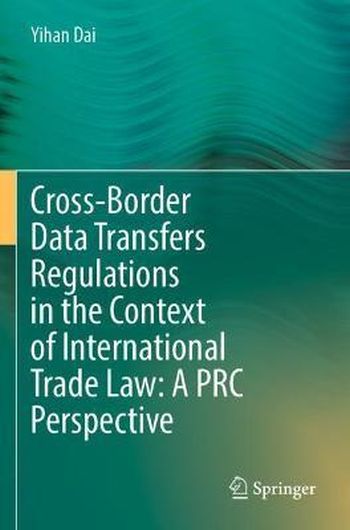
This book focuses on the PRC's cross-border data transfer legislation in recent years, as well as the implications for international trade law. The book addresses the convergence of industries and technologies notably caused by digitization; the issue of conflicts between goods and services; and the General Agreement on Tariffs and Trade (GATT) and General Agreement on Trade in Services (GATS) as well as the difficulty of classifying service sectors under WTO members' commitments. The book also examines the FTAs that entered into force after 2012 that regulate digital trade beyond the venue of the WTO and analyzes their rules of relevance for cross-border data flows and international trade. It asks whether and how these FTAs have deliberately reacted to the increasing importance of data flows as well as to the trouble of governing them in the context of global governance.